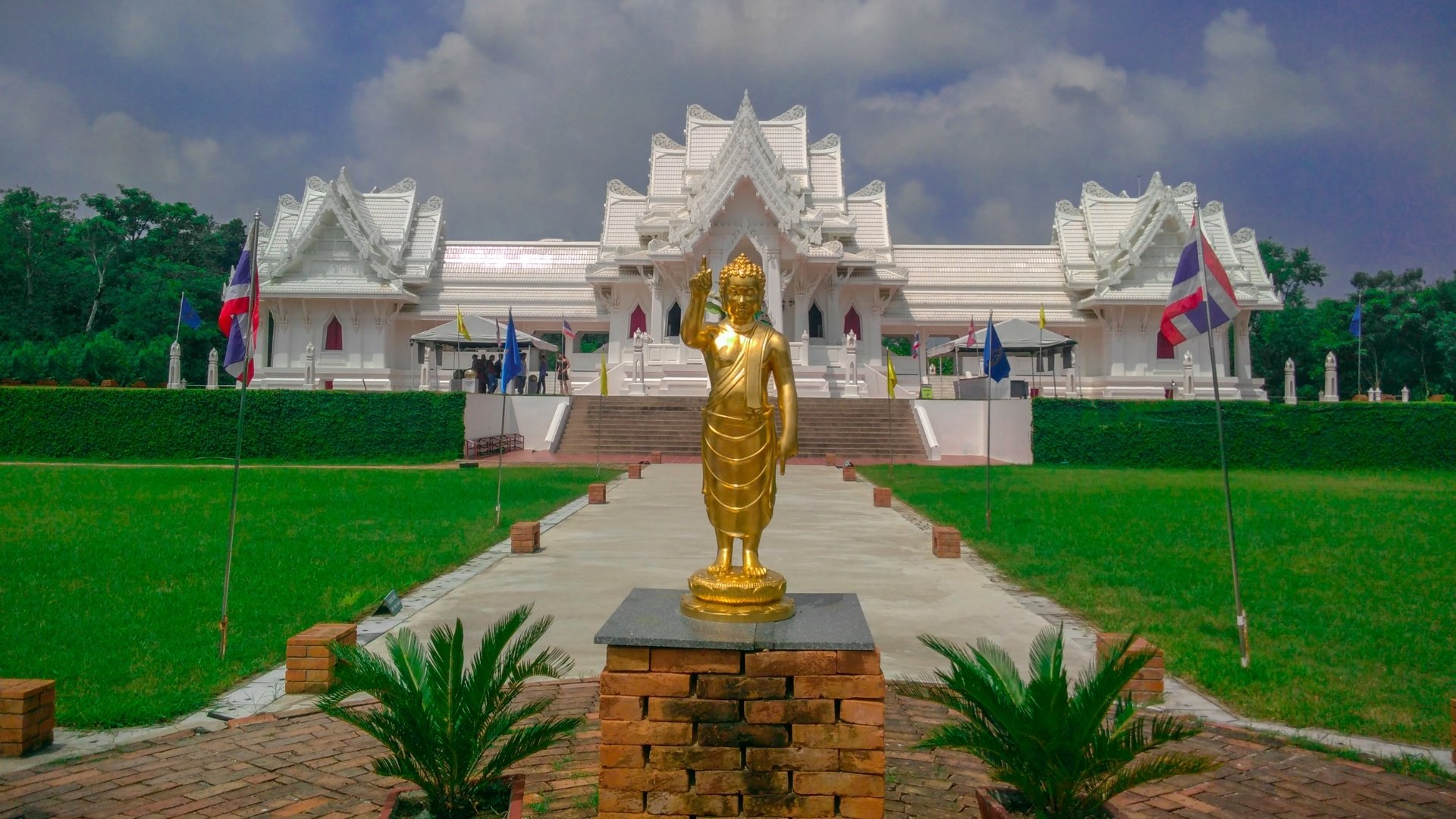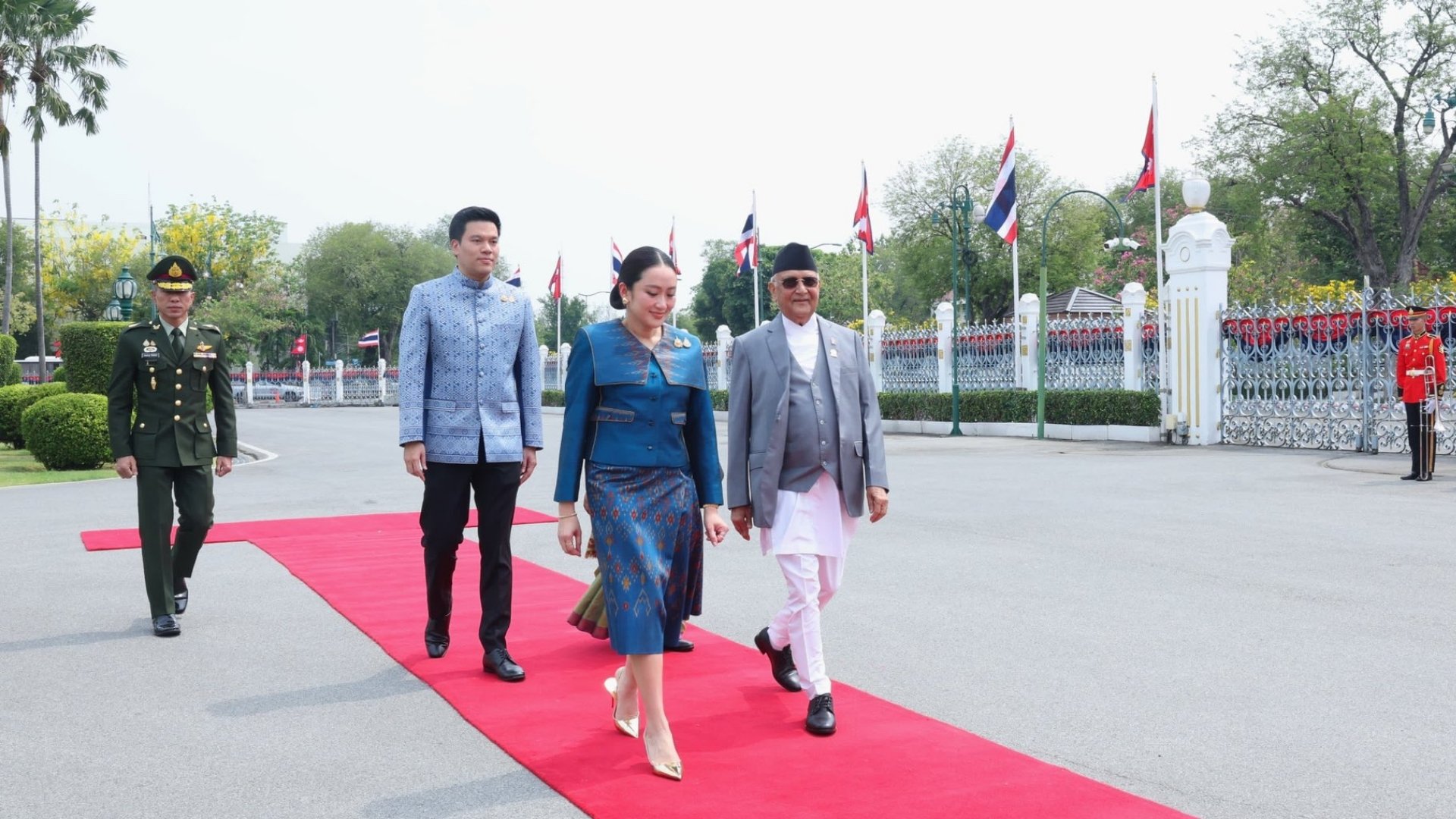Nepal-Thailand| state visit| bilateral meeting | economic diplomacy | regional association | bimstec

Prime Minister KP Sharma Oli wrapped up his state visit to Thailand this Saturday. This included participation in the sixth summit of the Bay of Bengal Initiative for Multi-Sectoral Technical and Economic Cooperation (BIMSTEC). Interestingly, it marked the first ever official visit since the two countries established bilateral relations in 1959.
Before official diplomatic relations began 65 years ago, ties between the two countries can be traced back to ancient times when Buddhism was thriving in Thailand. The two countries share deep religious ties through Hinduism and Buddhism, as well as linguistic connections, with many Thai and Nepali words being derived from Sanskrit. Not long ago, a news story highlighted a hidden village in Thailand, namely Pilok, established by Nepali settlers after World War II. The village remained unknown to Thai and Nepali authorities until the 1980s.
In modern history, however, nothing beats Thai Airways’ contribution to Nepal’s aviation legacy and tourism industry. The Thai flag carrier conducted Nepal’s first international flight connecting Bangkok and Kathmandu on December 4, 1968.
At present, Thailand, with its booming economy — now over half a trillion dollars in size with per capita income surpassing $7,500 — is also a south-east regional powerhouse.
Yet, despite the historic relationship and Thailand’s robust economic stature, Nepal’s engagement with the south-eastern powerhouse seems surprisingly passive — missing the opportunity for deeper collaboration and growth.
Both countries opened diplomatic missions at the chargé d’affaires level in 1969, which were upgraded to ambassadorial level in 1980. Four years later, they formed a joint working group at the secretarial level, which first met in 1986. It was upgraded to joint commission level in 1990 with a mandate to meet annually to discuss a whole gamut of relations including trade, tourism, civil aviation, investment and culture. The last joint commission (the fifth one), however met after 17 years in 2021.
Diplomatic visits between the countries date back to the 1970s during King Mahendra’s rule. Despite his bilateral visit to Thailand and the shared presence of monarchy, with King Bhumibol Adulyadej writing a book on King Janak from Videha, a reciprocal visit from the Thai monarch didn’t happen then. Thailand’s Supreme Buddhist monk, Somdet Phra Nayanasambhara, had visited Nepal for a bilateral trip, though.
More recent visits include former President Bidya Devi Bhandari who reached Thailand to pay respect to the late King Bhumibol in 2017. This however was not a state visit.
Meanwhile, PM Oli’s state visit has come against the backdrop and courtesy of the sixth BIMSTEC summit.

A relatively modest present-day relation despite a long history
Nepal and Thailand have expanded bilateral relations across tourism, culture, education and trade but still lack significant depth.
Over 70,000 Nepalis live and work in Thailand, including second-generation Nepalis and Nepali-origin emigrants from neighbouring Myanmar, as estimated by the Thai-Nepali Association.
The number of documented Nepali migrant workers remains minimal — official data suggests less than 100 between 2019/20 and 2023/24. However, the data only accounts for legal migrant workers and not the Nepali tourists who work in Thailand illegally, often under harsher conditions.
Thailand is also a preferred destination for Nepali students, although the numbers remain relatively small. The Asian Institute of Technology (AIT), a prestigious higher educational institution, has produced 1,714 Nepali alumni and currently has seven Nepali faculty members, 27 staff members, and 145 Nepali students. Nepal stands as one of the leading sources of students at AIT. Additionally, the Thai government provides numerous scholarships for Nepali government officials under its Thailand International Cooperation Agency (TICA).
Nepalis visiting Thailand for business, recreation and medical care services are also on the rise. In 2023, 21,260 Nepali tourists visited Thailand, making it the third most preferred destination after India and the United Arab Emirates (UAE). In December 2024 alone, 5,370 Nepali tourists left for Thailand.
While Nepal is a significant destination for Thai pilgrims and monks due to the country’s significance in Buddhism. With over 90% of Thailand's over 65 million population practicing Buddhism, the Thai government has even built a Buddhist monastery in Lumbini. Yet, despite direct flights between the two countries, tourist arrivals have remained modest. Around 26,000 Thais visited Nepal last fiscal year, which was some 20,000 Thai tourists in the pre-pandemic fiscal year 2020/21.
Both countries share a modest trade relationship, with a significant imbalance on Nepal’s side, which amounts to NRs 987 million as of March this fiscal year. Nepal imports over a billion rupees worth of goods and services annually from Thailand, while exporting around NRs 0.15 billion to the country, which has remained consistent in the last two fiscal years [see table below].
Nepal mainly imports commodities like cosmetics, roasted coffee, dentifrices, and PVC pipes. On the other hand, it exports original sculptures, wheat, carpets, and pet food, among others.
| Year | Trade Balance | Import | Export |
| 2021/22 | -0.01 | 0.01 | 0.0001 |
| 2022/23 | -1.5 | 1.6 | 0.156 |
| 2023/24 | -1.4 | 1.6 | 0.151 |
| 2024/25* | -0.987 | 1.1 | 0.158 |
Additionally, Thai investors have made several investments in different sectors of the country, including manufacturing, mineral water production, hotel businesses and restaurants but remain modest in Nepal.
Until FY 2022/23, Nepal approved 13 projects with an initial pledged amount of NRs 1.01 billion Thai investment. Only 12% of it, NRs 126 million, was realised, as reported by the federal Department of Industry.
Thailand is a significant source of foreign direct investment, which increased from $57 billion in 2023 to $66 billion in 2024 — the majority of which is into manufacturing, financial and insurance services, mining, real estate and trade. ASEAN countries account for 28% of those investments, followed by Europe (12%). No significant investments are made in Nepal, and other South Asian countries except for India.
Apart from bilateral relations, the two countries historically adhere to non-aligned principles and presently are member countries of BIMSTEC, a regional cooperation organisation that came into existence in 1997 intending to connect the Bay of Bengal region. South Asian members include Nepal, India, Bangladesh and Bhutan, while East Asian countries include Thailand and Myanmar. Often perceived as an alternative to SAARC, BIMSTEC has also struggled to make significant progress. Last week marked the sixth summit in over 25 years, while regional economic connectivity and cooperation remain lackluster.
The latest engagement
In the latest bilateral engagement, both have agreed to invest in agriculture, tourism, medical services and herbal processing. Furthermore, Thai PM Paetongtarn Shinawatra expressed her country’s commitment to invest in Nepal’s aviation sector along with willingness to expand Thai airlines to Kathmandu and direct flights to Lumbini.
The two countries signed eight memorandums of understanding (MoU) — two government levels and six non-governmental — on tourism, cultural cooperation, business and academia.
While the discussions on future bilateral engagements are promising, MoUs alone hold little value. A case in point is the Belt and Road Initiative (BRI), which remained in limbo for seven years even after the signing of MOUs in 2017. The stagnation was largely attributed to Nepal’s lack of proactive engagement, but the situation showed slight progress during the end of 2024 after Nepal and China signed a three-year framework agreement.
Similarly, alongside PM Oli’s state visit, the Indian PM Narendra Modi was also invited for a state visit on April 4. With both visits taking place in the context of BIMSTEC, Oli’s visit seemed more of a ceremonial gesture from Thailand than a result of the country’s proactive diplomacy.
Nepal’s diplomatic focus which largely remains towards India, China and the US could explain Nepal’s relative neglect of Thailand in its foreign policy. This coupled with Nepal’s passive diplomacy — characterised by a lack of results and often driven by political appointees and outdated diplomats along with the country’s focus on political transition over economic priorities — contributes to the oversight. The country however must look beyond for strategic and economic diversifications. The recent milestone visit could prove to be fruitful only if follow-up diplomatic initiatives are strong and consistent.
Read More Stories
Kathmandu’s decay: From glorious past to ominous future
Kathmandu: The legend and the legacy Legend about Kathmandus evolution holds that the...
Kathmandu - A crumbling valley!
Valleys and cities should be young, vibrant, inspiring and full of hopes with...
As of 27th May, Nepals capital expenditure stands at nearly 37%with one and...